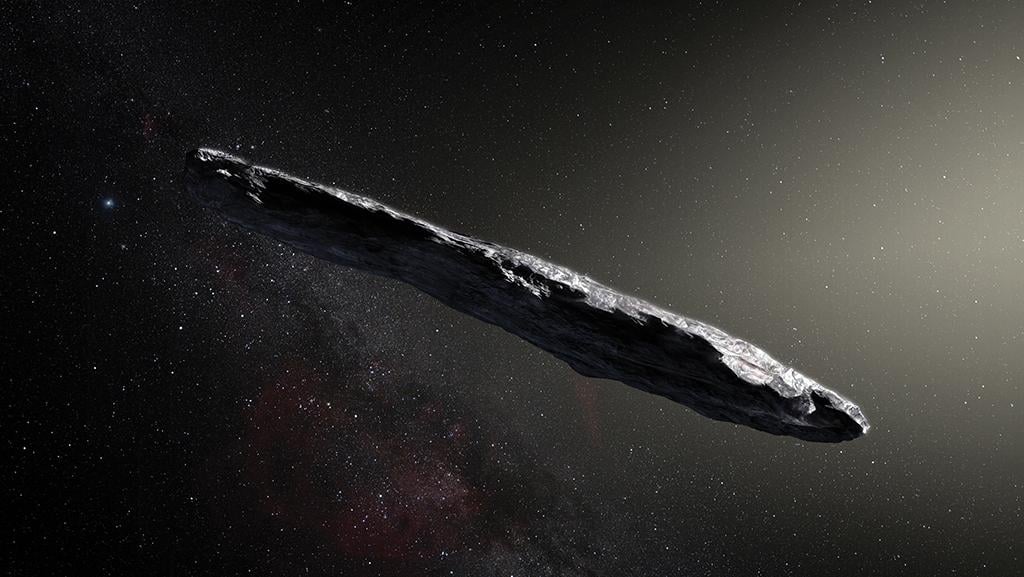
Nearly 400 years ago, Italian astronomer Galileo Galilei published a book that built a case for an alternative view of the Solar System, one that revolved not around Earth but the Sun.
Initially licensed by the Roman Inquisition, Dialogue Concerning the Two Chief World Systems proved so controversial that the book was banned for the next 190 years. Skeptics refused to look through Galileo’s telescope to see for themselves the moons of Jupiter, Saturn’s rings and other celestial objects, observations that supported Galileo’s then-radical theory that Earth was not the center of the universe. Galileo spent the rest of his life under house arrest.
Hoping for a more open- minded outcome, a group of scientists is borrowing Galileo’s name to marquee a research project as controversial as any pursued by Galileo himself—a systematic survey for evidence of extraterrestrial technological artifacts.
The Galileo Project is intended to build a public database of unidentified aerial phenomena (UAP). “Our goal is to [have] transparent analysis based on physics as we know it,” Harvard University astrophysicist Avi Loeb said during a July 26 press conference.
“The scientific community needs the determination to systematically, scientifically and transparently look for potential evidence of extraterrestrial technological equipment,” he added in a statement about the project. “The impact of any discovery of extraterrestrial technology on science, our technology and on our entire world view would be enormous.”
The privately funded Galileo Project follows the June 25 release of a Pentagon report to Congress that outlined preliminary analysis of 144 UAP sightings from military and intelligence sources. The report determined that most sightings were likely physical objects, rather than optical or atmospheric illusions. However, the data was not good enough to provide additional details. “That’s quite an unusual admission by the government—the most conservative organization that I know of—saying there are objects in our sky that we don’t fully understand,” said Loeb.
“It’s a matter of national security, in principle,” he added. But the observations are “not something that politicians or military personnel should interpret because they were not trained as scientists,” he continued. “It is for the science community to figure out, just the same way that astronomers figure out the nature of objects very far away. There is no difference.”
The Pentagon’s UAP Task Force concluded that classified U.S. technology is not behind the dozens of unexplained sightings by military pilots and other credible witnesses. “That’s hugely important,” says Luis Elizondo, former director of the Advanced Aerospace Threat Identification Program, a U.S. government program created in 2007 to investigate UAPs.
“For 30 years, there has always been this undercurrent, these conspiracies, that there was some program, some sort of super special technology that has been implemented and we’ve been just been very careless about it. That argument was put to bed,” Elizondo said during a June 8 webcast interview with The Washington Post.
“We’re dealing with a technology that could be 50-1,000 years ahead of us,” he said. “These things can outperform anything that we have in our inventory—and we’re pretty certain anything that our foreign adversaries have in their inventory. At the end of the day, we don’t know what we’re dealing with. All options have to be on the table.”
The Galileo Project plans three research initiatives: obtaining high-resolution, multidetector images of UAPs; scanning for interstellar objects, similar to the 2017 discovery of the cigar-shaped interstellar object Oumuamua (Hawaiian for “scout,”); and searching for potential extraterrestrial satellites around Earth.
“Hopefully, we will explain many of the UAPs—they will be mirages or electromagnetic effects or Earth technology objects,” says project co-founder Frank Laukien, chairman, president and CEO of Bruker Corp., a science equipment manufacturer based in Massachusetts. “We will look agnostically and make the data available to everyone.”
The Galileo Project will not assess past sightings. “These are not conductive to rigorously cross-validated, evidence-based scientific explanations which we are seeking,” Laukien says. “We want to clear the fog through a transparent and scientific analysis by assembling our own data—not data based on government-owned sensors because most of that data is classified.”
The project, which so far has raised about $1.8 million, proposes to use data from existing and upcoming survey telescopes, including the Vera C. Rubin Observatory under construction in Chile. The group also hopes to launch a spacecraft to study an Oumuamua-like object at close range.





Comments
This is so typical of all "skeptics" to this day.
There is nothing controversial about looking for evidence, however radical or harebrained the conjecture one is trying to support (or rule out) might be. What *is* controversial is shouting "aliens!" whenever we don't understand something. Aliens are becoming the new "god of the gaps".
More evidence is exactly what we need. Who knows, perhaps those things around Tabby's star do end up to be megastructures under construction (or decay) after all... :o)
As for those "sightings" of UAP that Pentagon did release, they are painfully obviously FLIR artifacts (based on real imaged objects, e.g. one instance of Boeing 747 airliner). I certainly hope this project will cast their net wider than this.
The problem these days in many disciplines is that speculation is regarded as evidence, requiring even more skepticism.
Every time I hear "the science is settled" I want to scream.